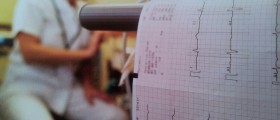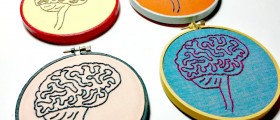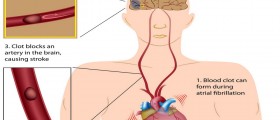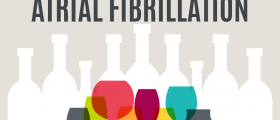
TIA (transitory ischemic attack) is a neurological condition that represents an introduction to a more complex and severe neurological disorder- the stroke. This condition develops as a consequence of temporary disturbance of blood supply to an area of the brain. As a result, one experiences a sudden and brief decrease in brain function.
Difference between TIA and a Stroke
It is essential to differentiate TIA from a stroke because during TIA there is no permanent damage to brain tissue and brain cells do not die. The symptoms of TIA do not last as long as those in classic stroke. Finally, after TIA there are no specific brain lesion that can be identified during CT scan or MRI of the brain.
TIA occurs due to a blood clot within the artery of the brain, a blood clot that travels to the brain and actually originates from somewhere else in the body, an injury to blood vessels or narrowing of a blood vessel in the brain. Blood clots responsible for temporary disruption in blood flow soon dissolve and circulation is re-established.
Prevention of TIA
One may be able to prevent TIA only after getting familiar with all the factors that increase the risk for the condition. Unfortunately, not all factors can be successfully controlled. TIA prevention generally starts with lifestyle changes and treatment of all the underlying conditions that can easily cause temporary disruption in blood flow in the brain.
Getting to Know TIA Risk Factors
After obtaining sufficient information regarding all the risk factors and conditions as well as behaviors that may increase the chance of getting TIA, one may engage in the process of prevention.
Risk factors associated with TIA are high blood pressure, smoking, heavy alcohol consumption, high cholesterol, different heart diseases (especially atrial fibrillation), diabetes, carotid artery disease, sleep apnea and sometime drug abuse. Overweight individuals, people who abstain from any physical activity and those having an unhealthy diet may also eventually end up with TIA.
TIA Preventive Measures
Once the risk factors are identified, one may change unhealthy habits or start with adequate treatment of the underlying conditions.
For instance, it is important to regularly control blood pressure and cholesterol, prevent diabetes or treat it adequately if the illness occurs and control atrial fibrillation as well as other heart conditions.
Bad habits must be eradicated and healthy ones adopted. One is due to quit smoking, have a well-balanced (heart-healthy) diet, drink alcohol only in moderation and abstain from illegal drugs. Maintaining a healthy weight and being physically active also contribute to the overall health and prevent TIA from developing.
It is best to consult a doctor who will perform all the exams, if necessary propose treatment of the underlying conditions and a good dietitian will help one start eating healthy. Dietitians also design special diets for obese people.
All in all, there are many experts and professionals who can be engaged in the process of prevention of TIA.














-Disease-Cause-A-Stroke_f_280x120.jpg)


Your thoughts on this
Loading...